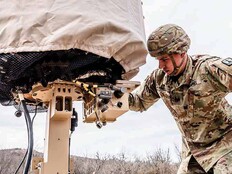What Can AI-Infused Superteams Enable for Agencies?
Historically, government work has often involved a significant amount of data entry, transaction processing and report compilation, Forsythe notes. Superteams revolve around the idea that an AI-infused element working more closely alongside or within a team can help human workers automate those tasks so that humans can “do the analysis, problem-solving, higher-level advisory and customer service,” work, Forsythe says. That work is “mission value-added, more meaningful and engaging to them,” he notes.
“When teams dedicate people to focus on the innately human work and relegate automatable work to technology, organizations can both improve the employee experience by allowing people to focus on interesting and meaningful work, while increasing overall productivity and depth of insights,” the Deloitte report states.
Robotic process automation and AI-based tools “must be introduced in a manner that complements the employee experience,” the report notes, adding that “Hybrid teams must be led by human intelligence, critical thinking, and nuanced decision-making, and also include a spectrum of technical support that manages tasks, analytics, or workflow in tandem with the human element.”
Superteams are essentially an expanded and more intentional use of RPA tools, according to Forsythe. Increased efficiency should be a factor in this movement, but so should improving employee experience, according to Deloitte.
“No human anywhere, by the end of this decade, will need to be doing data entry,” Forsythe says.
Superteams, though not dubbed as such, are already in place at many agencies. For example, at the Agriculture Department’s Farm Service Agency Farm Loan Program, workers there are taking increased advantage of AI tools to advance their mission.












